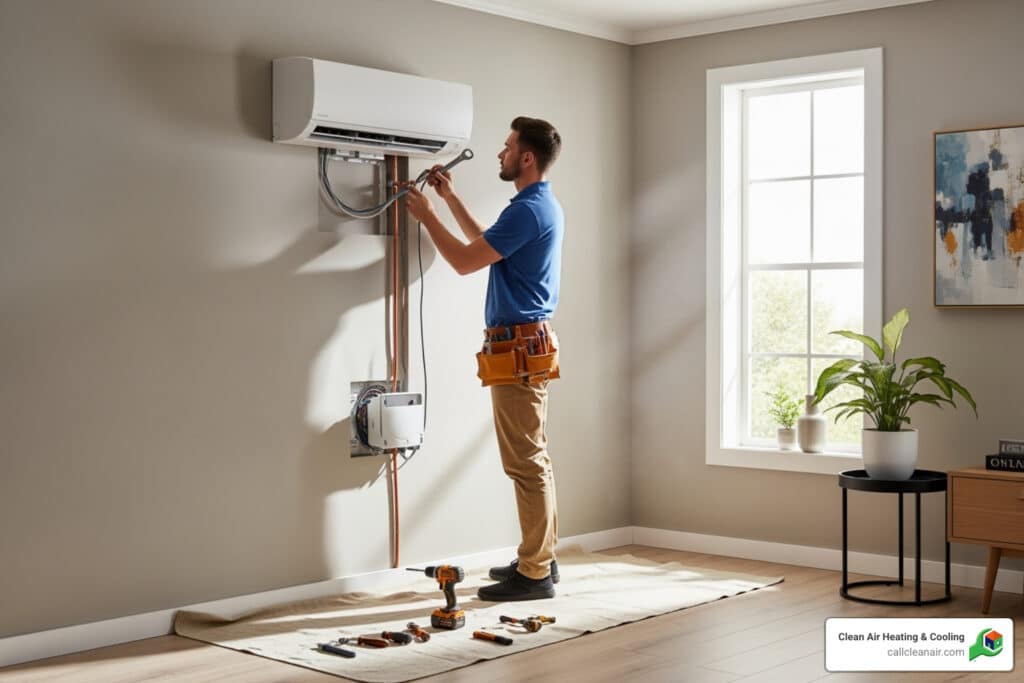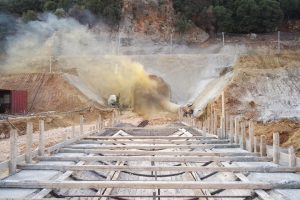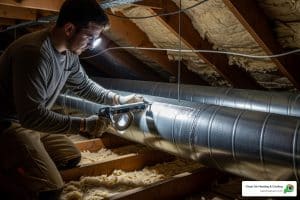Understanding the True Cost of Mini Split AC Installation
Mini split AC installation cost varies, but understanding the key factors helps you budget effectively. Most homeowners invest between $2,000 and $14,500 for a complete installation, with the national average around $3,000 for a single-zone system.
Quick Cost Overview:
- Single-zone system: $2,000 – $5,000
- Multi-zone system: $3,500 – $14,500+
- Installation labor: 30-50% of total cost
- Equipment: Varies by brand, efficiency, and features
The wide cost range reflects variables like system size, number of zones, energy efficiency, and installation complexity. For example, a four-zone system for a 2,400-square-foot home might cost $8,500, but the homeowner could see energy bills drop by $120 per month in summer by cooling only occupied rooms. This shows how the initial investment leads to long-term savings.
As Colin Matei, owner of Clean Air Heating & Cooling, I’ve seen that while the upfront investment may seem significant, the long-term comfort and energy savings make ductless systems an excellent choice for Pacific Northwest homes.
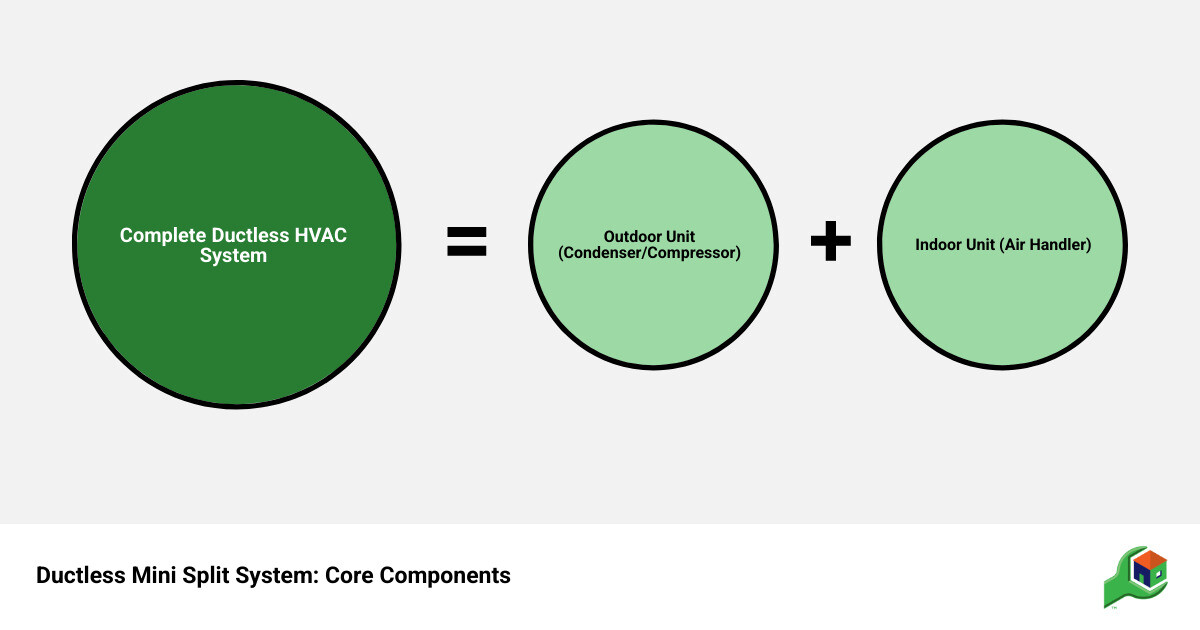
Key Factors That Determine Your Mini Split AC Installation Cost
Several key factors influence your final mini split AC installation cost. Understanding them helps you make smart decisions and avoid surprises. Because every home is different, we start with a thorough assessment to ensure you get a system that fits your space, lifestyle, and budget.
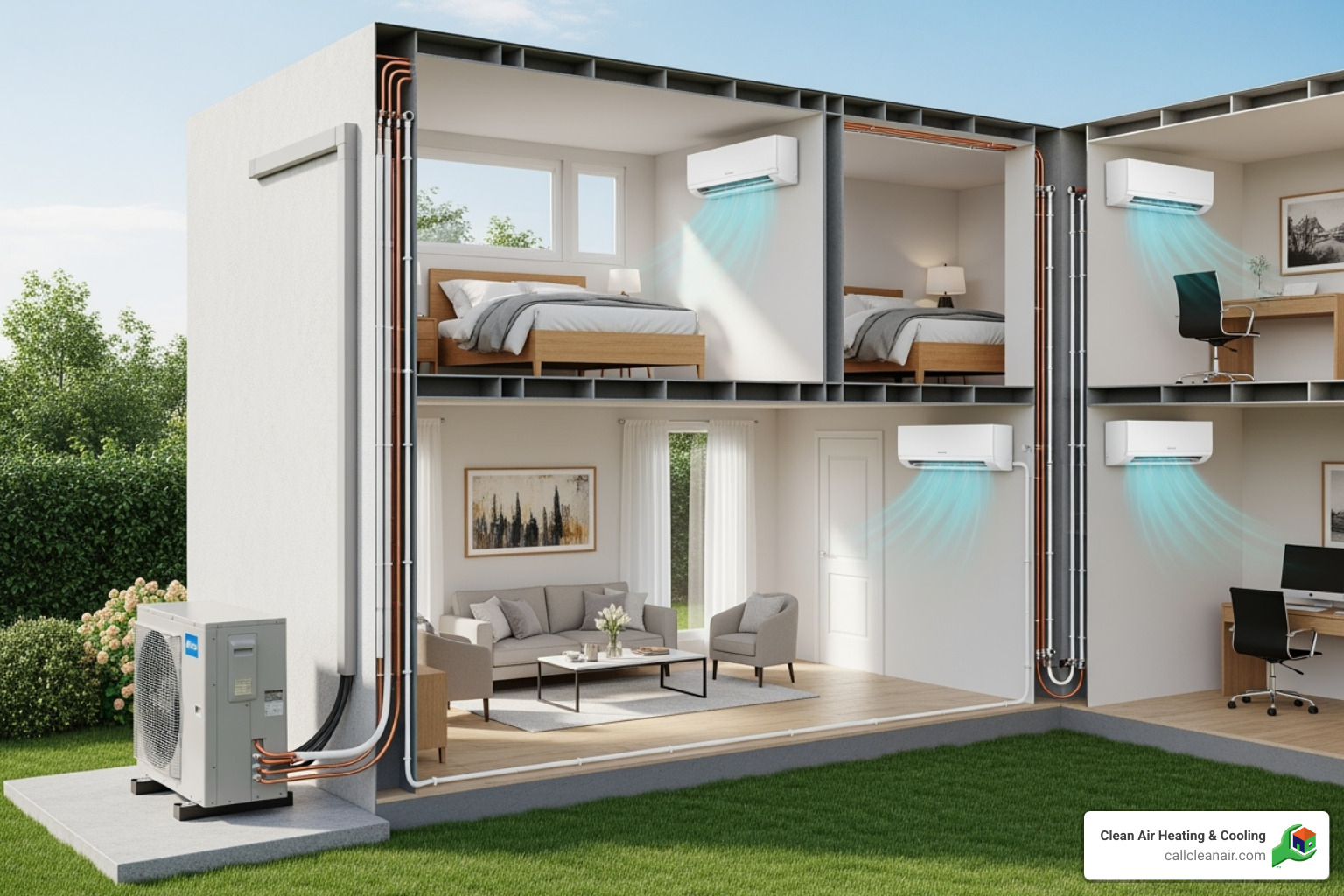
System Size and Capacity (BTU)
BTU (British Thermal Units) capacity is your system’s power. Sizing isn’t just about square footage; we also consider room layout, ceiling height, insulation quality, and the local climate. A system that’s too small will struggle to keep up, while one that’s too large will cycle inefficiently, wasting energy and creating uncomfortable temperature swings. Proper sizing requires a detailed load calculation to ensure optimal performance and efficiency. You can learn more about how to size a mini split system to understand this process better.
Number of Zones: Single vs. Multi-Zone
Mini splits excel at zoned temperature control. A single-zone system (one indoor unit connected to one outdoor unit) is ideal for a single space. A multi-zone system connects multiple indoor units to a single outdoor unit, allowing independent temperature control in different rooms. While adding zones increases the initial mini split AC installation cost, a multi-zone system is often more cost-effective per room than installing several separate single-zone systems.
Energy Efficiency Ratings (SEER2 & HSPF2)
Energy efficiency ratings predict long-term operating costs. SEER2 (Seasonal Energy Efficiency Ratio 2) measures cooling efficiency, while HSPF2 (Heating Seasonal Performance Factor 2) measures heating efficiency. Higher ratings mean lower electricity bills. While high-efficiency units have a higher upfront cost, they deliver significant savings over the system’s lifespan, often reducing cooling costs by 30-40%. You can find qualifying models by looking for energy efficient systems.
Installation Complexity and Labor
Labor typically makes up 30-50% of the total mini split AC installation cost. Professional installation is critical for long-term performance. Factors that increase complexity and cost include:
- Electrical Work: Installing new dedicated circuits or upgrading an electrical panel.
- Wall Type: Mounting on difficult surfaces like brick or masonry.
- Line Set Length: Longer or more complex routes for refrigerant lines.
- Accessibility: Difficult-to-reach locations for indoor or outdoor units.
- Condensate Drainage: Needing a condensate pump or complex routing.
Additional Features and System Types
Your choice of indoor unit and features also affects cost. Wall-mounted units are the most common and cost-effective. Ceiling cassettes are recessed for a discreet look but have a more complex installation. Floor-mounted units are a great solution for rooms with limited wall space.
Modern features can improve comfort and convenience, though they add to the initial cost:
- Wi-Fi connectivity for remote control via smartphone.
- Smart thermostats that learn your habits to optimize energy use.
- Advanced filtration to improve indoor air quality.
- Dehumidification modes for added comfort in humid conditions.
A Detailed Breakdown of Installation Costs
Understanding where your money goes helps clarify the mini split AC installation cost. The total price breaks down into two main categories: the cost of the equipment itself and the cost of professional labor to ensure it’s installed correctly for optimal performance.
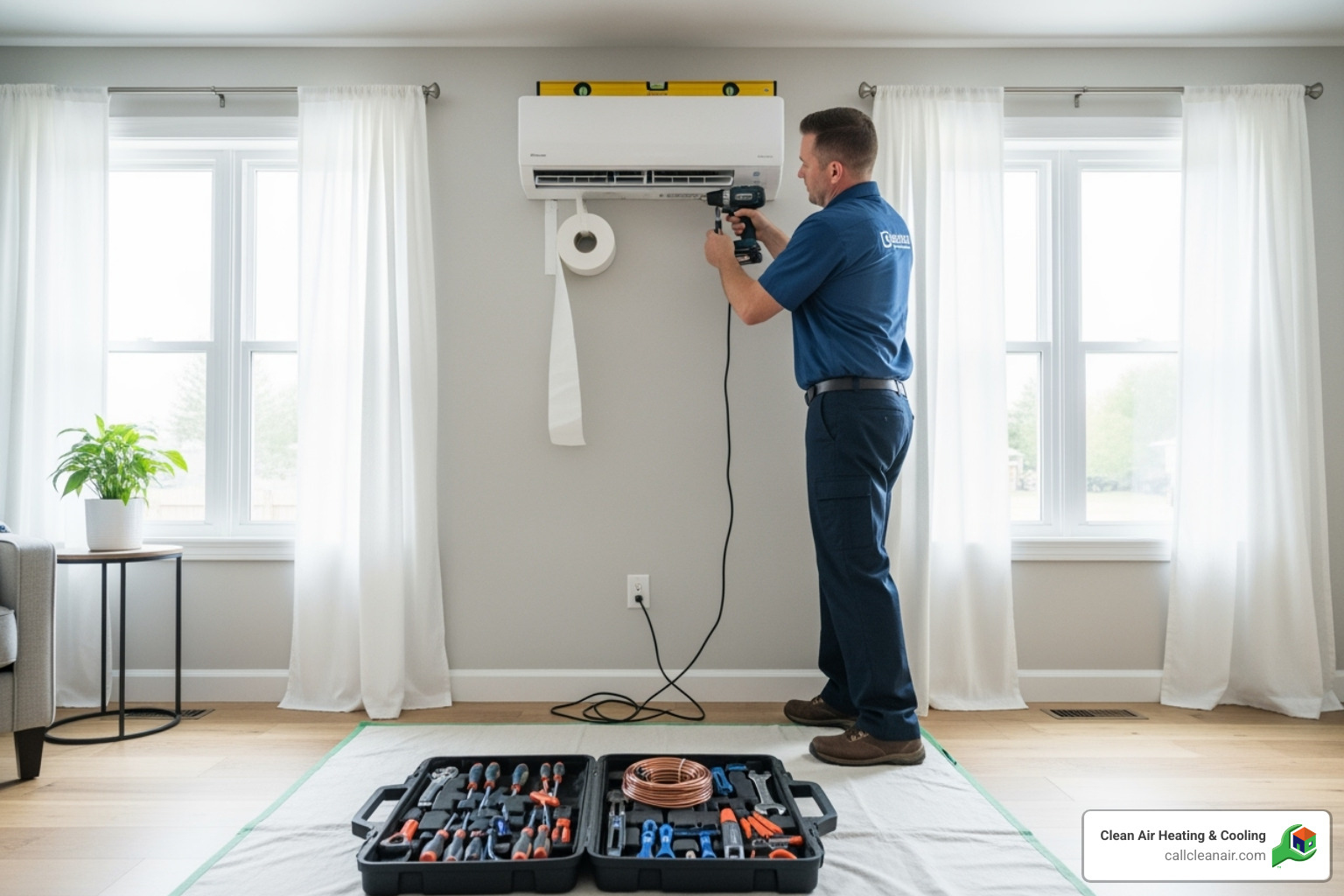
Breaking Down the Mini Split AC Installation Cost by Component
Your total investment covers equipment, labor, and materials.
- Equipment Cost: This includes the outdoor unit (price depends on capacity, brand, and efficiency) and the indoor units (wall-mounted are most budget-friendly, while ceiling cassettes and floor-mounted units cost more).
- Labor Costs: Accounting for 30-50% of the project, this covers the skilled work of mounting units, running and connecting lines, handling refrigerant, and testing the system.
- Miscellaneous Materials: This includes essential items like copper refrigerant lines, electrical wiring, mounting brackets, and line set covers for a professional and durable installation.
For a more comprehensive look, you can find more info about mini split installation cost on our website.
Example Scenario: Cost for a 1,000 sq. ft. Home
For a typical 1,000-square-foot home in Whatcom County, a complete mini split AC installation cost could range from $3,000 to $10,000. While a single unit might work for an open-concept layout, a 2-3 zone system often provides superior comfort and efficiency. This multi-zone approach allows you to heat or cool only the rooms you’re using, which maximizes comfort and energy savings.
Comparing Costs: Mini Splits vs. Central Air vs. Window Units
It’s helpful to see how the mini split AC installation cost compares to other cooling options.
| Metric | Mini Splits | Central Air Conditioning | Window Units |
|---|---|---|---|
| Upfront Installation Cost | Moderate to High (due to equipment & labor) | Moderate to High (ductwork adds significant cost if not existing) | Low (unit cost + minimal installation) |
| Long-Term Energy Costs | Low (highly efficient, zoned control) | Moderate to High (duct losses, whole-house cooling) | High (inefficient, limited control) |
| Zoned Control | Excellent (individual room/area control) | Poor (whole-house temperature, limited zoning) | Poor (single room, no overall control) |
| Installation Invasiveness | Low (small wall penetration, no ducts) | High (ductwork installation, often disruptive) | Low (fits in window, can block view) |
| Noise Level | Low (indoor units are very quiet) | Moderate (outdoor unit outside, indoor via vents) | High (unit sits inside the room, often noisy) |
Mini splits offer a compelling balance of upfront cost and long-term value. They are far more efficient and effective than window units. Compared to central air, mini splits are often less expensive to install in homes without existing ductwork and offer superior energy efficiency due to zoned control and the absence of duct losses.
How to Save Money on Your Mini Split Installation
Investing in a mini split is a big decision, but there are smart ways to reduce your mini split AC installation cost without sacrificing quality. The key is to make choices that provide both upfront savings and long-term value.
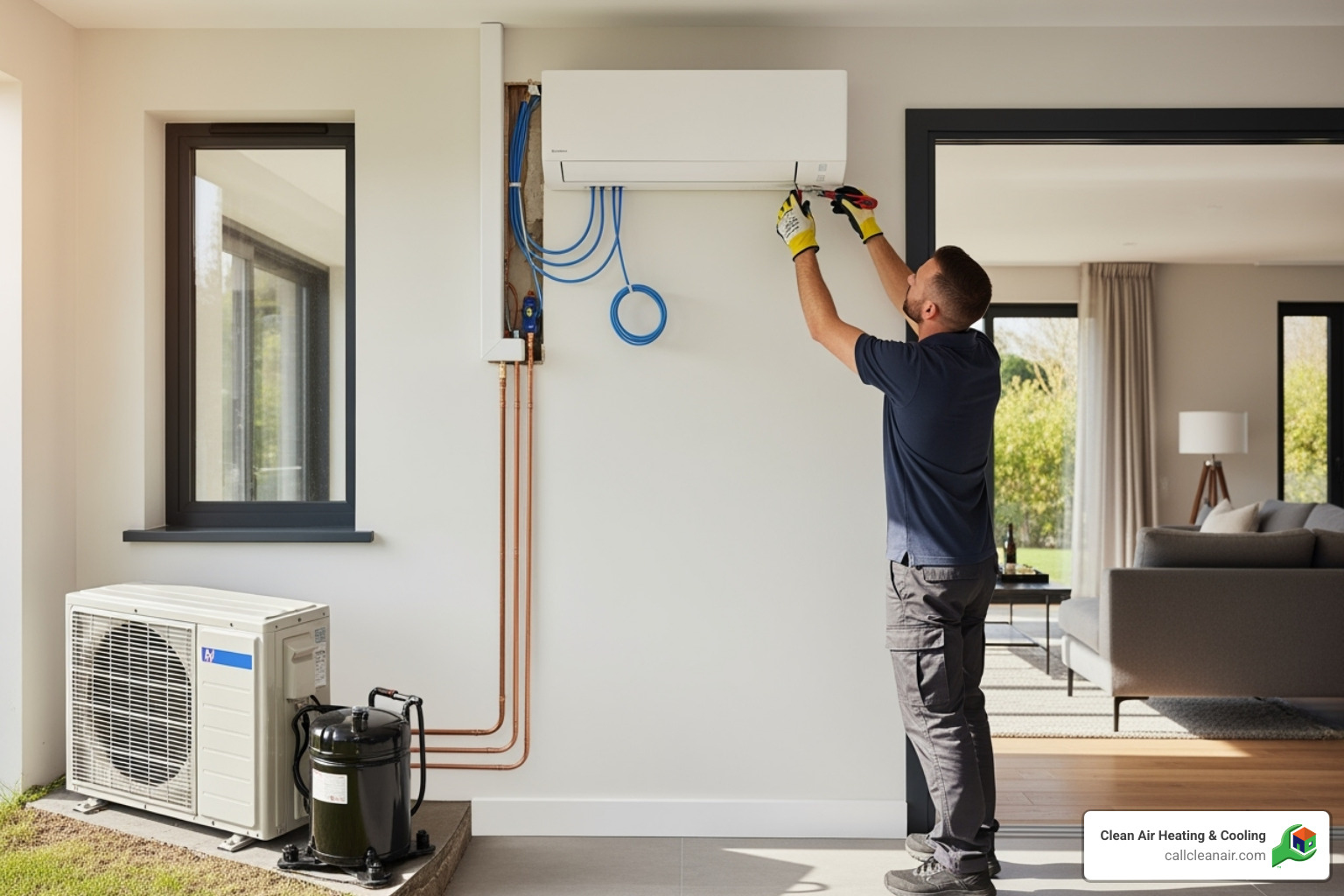
Can a DIY Approach Lower Your Mini Split AC Installation Cost?
While DIY kits may seem like a way to save on labor, we strongly advise against it. Mini split installation involves complex electrical work and the handling of refrigerants, which requires EPA certification and can be dangerous if done incorrectly. The risks are significant: fire hazards, illegal refrigerant leaks, and damage to the equipment. Crucially, a DIY installation will void your manufacturer’s warranty, leaving you responsible for any future repair costs. Often, fixing a botched DIY job costs more than the initial professional installation. For More info about professional mini split ac installation, we can explain what a proper installation entails.
Finding Rebates and Tax Credits
Rebates and tax credits can significantly lower your net mini split AC installation cost. These incentives are designed to encourage homeowners to choose energy-efficient systems.
- Federal Tax Credits: The Inflation Reduction Act offers substantial tax credits for qualifying high-efficiency mini split heat pumps.
- State and Local Incentives: Washington State and local utilities like Puget Sound Energy often provide additional rebates that can be combined with federal credits.
These programs can save you thousands of dollars. To see what you qualify for, check the Database of State Incentives for Renewables & Efficiency (DSIRE). Local customers can also find specific information on PSE heat pump rebates and Washington State heat pump rebates on our site.
Choosing the Right Professional for a Smooth Installation
Selecting the right contractor is about finding the best value, not just the lowest price. A quality installation is key to your system’s performance and longevity. As a company with over 480 five-star Google reviews serving Whatcom, Skagit, Snohomish, and San Juan Counties, we recommend you look for the following:
- Licensing and Insurance: Verify that the contractor is properly licensed and insured.
- Certifications: Look for NATE (North American Technician Excellence) certification as a mark of expertise.
- Experience: Ensure they have specific experience with ductless mini split installation.
- Itemized Quotes: Get multiple detailed quotes to compare costs and services accurately.
- Reviews and Warranties: Read recent customer reviews and ask about warranties on both equipment and labor.
Long-Term Value: Lifespan, Maintenance, and Reliability
The mini split AC installation cost is an investment in long-term comfort and savings. The true value of a mini split system is realized over years of reliable performance and lower energy bills. Our customers in Whatcom and Skagit counties consistently report high satisfaction with their systems long after the installation is complete. For more information on keeping your system running smoothly, you can visit our page on More info about mini split HVAC services.
What is the Lifespan of a Mini Split System?
With proper care, a mini split system can last 15 to 20 years, often outliving traditional central air systems. The key factors influencing longevity are the quality of the initial installation and consistent, regular maintenance. This long service life means your initial investment provides comfort for decades.
Ongoing Maintenance to Protect Your Investment
Simple maintenance protects your investment and ensures efficiency. Homeowners should perform monthly filter cleaning on indoor units; it’s a simple task of rinsing the filters to prevent airflow restriction. Additionally, annual professional inspections are crucial. During a tune-up, a technician will clean coils, check refrigerant levels, inspect electrical connections, and clear drain lines. This preventative care keeps the system running at peak efficiency and helps avoid costly repairs.
Are Mini Splits as Comfortable and Reliable as Central Systems?
Many homeowners find mini splits to be even more comfortable and reliable than central air. Here’s why:
- Zoned Comfort: You can set different temperatures in each room, saving energy by not conditioning unused spaces.
- Quiet Operation: Indoor units are whisper-quiet, operating at levels much lower than central air vents or window units.
- Consistent Temperature: Inverter technology allows the system to maintain a steady temperature without the constant on-off cycling of traditional systems.
- Superior Efficiency: By eliminating ducts, mini splits avoid the energy loss (up to 30%) common in central air systems.
A well-designed multi-zone mini split system can provide excellent whole-home comfort, often outperforming central air, especially in homes without existing ductwork.
Frequently Asked Questions about Mini Split Costs
Here are answers to common questions homeowners in Whatcom County have about mini split AC installation cost.
Do mini splits add value to a home?
Yes. Mini splits are a valuable upgrade, especially in homes without existing ductwork, as they add modern, efficient heating and cooling without the cost and disruption of installing ducts. For potential buyers, a mini split system signals energy efficiency, lower utility bills, and zoned comfort. In the Pacific Northwest market, these features can increase a home’s appeal and resale value.
How long does a typical mini split installation take?
A typical single-zone installation can usually be completed in one day. Multi-zone systems are more complex and may take 1 to 3 days to install. The exact time depends on the number of indoor units and the complexity of running the refrigerant and electrical lines. We prioritize quality workmanship to ensure your system provides reliable comfort for its full 15-20 year lifespan.
Is a mini split heat pump a good choice for the Pacific Northwest?
Yes, a mini split heat pump is an excellent choice for the Pacific Northwest. Modern systems are highly efficient in our region’s mild winters and warm summers, providing reliable heating and cooling from a single unit. They perform well even in the damp, chilly weather common in Whatcom and Skagit counties. Their ductless design and zoned control lead to significant energy savings, making the mini split AC installation cost a very smart investment for local homeowners.
Conclusion: Making a Smart Investment in Your Home’s Comfort
While the mini split AC installation cost can seem significant, it’s an investment in long-term comfort and efficiency. The final price depends on factors like system size, number of zones, and efficiency, but the returns come from lower energy bills, personalized comfort, and a reliable system lasting 15-20 years.
To maximize your investment, always opt for professional installation to ensure safety, efficiency, and a valid warranty. Don’t forget to explore federal, state, and utility rebates, which can make your mini split AC installation cost much more affordable.
At Clean Air Heating & Cooling, we have helped hundreds of families in Whatcom, Skagit, Snohomish, and San Juan Counties find the right comfort solution. Our commitment to quality is reflected in our 25% utility savings guarantee and over 480 five-star Google reviews. We provide honest assessments, transparent pricing, and expert installations custom to the Pacific Northwest climate.
Ready to make a smart investment in your home? For expert advice and a precise quote, explore our ductless mini split installation services. Let us help you achieve lasting comfort and savings.

